About Andrew J. Viterbi
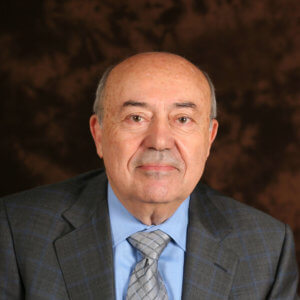
Andrew J. Viterbi’s Legacy
Andrew Viterbi earned one of the first doctorates in electrical engineering ever granted at USC. The "Viterbi Algorithm", a mathematical formula to eliminate signal interference, paved the way for the widespread use of cellular technology, and catapulted Viterbi into the limelight of wireless communications worldwide.
Today, the Viterbi Algorithm is used in all four international standards for digital cellular telephones, as well as in data terminals, digital satellite broadcast receivers and deep space telemetry. Viterbi is also the co-developer of CDMA -- Code Division Multiple Access -- the most widely used cell phone technology in the U.S.
Bold ideas & an inventive spirit transform the world
Communications pioneer Andrew J.Viterbi — who in 1962 earned one of the first doctorates in electrical engineering granted at the University of Southern California — has forever changed how people everywhere connect and communicate, whether from across a crowded city, between nations or from the infinite reaches of space.
Born into an analog world, this visionary thinker opened the doors to the digital age with the Viterbi Algorithm, a groundbreaking mathematical formula for eliminating signal interference. Today, the Viterbi Algorithm is used in all four international standards for digital cellular telephones, as well as in data terminals, digital satellite broadcast receivers and deep space telemetry.
Dr.Viterbi’s lifelong interest in communications began as a child, when his family fled Italy for America in 1939 to escape the persecution of Jews. Long absences from family members instilled a desire to find ways of communicating across political and geographical borders.
Theories into action
The Viterbi family first settled in New York, then Boston. He entered the Massachusetts Institute of Technology (MIT) in 1952, studying electronics and communications theory under such renowned scholars as Norbert Wiener, Claude Shannon, Bruno Rossi and Roberto Fano. In 1956, he met Erna Finci, married and started a family.
In 1957, the Cold War was underway. In October of that year, the Soviets launched Sputnik, the world’s first artificial satellite, and the space race was on.
The new MIT grad and his family moved to California, home to defense industry giants. He went to work at the California Institute of Technology’s Jet Propulsion Laboratory, then a center for communications and satellite control systems, which soon became part of a new National Aeronautics and Space Administration. There, he specialized in the communications technology of “spread spectrum” systems on a team that designed the telemetry equipment for the first successful U.S. satellite, Explorer 1. Faced with a challenge to process and transmit information packets from space as accurately and quickly as possible, the team confronted two problems: the satellite’s weak signal, caused by its long journey, and frequency changes created by rapid orbits.
From this work, Dr.Viterbi developed the topic for his Ph.D. dissertation at USC: error correcting codes.
Inventing a new paradigm
Dr. Viterbi’s love of new ideas in information theory led him first into an academic career. In 1963, he joined the UCLA faculty, teaching courses in digital communications and information theory. However, he found that the algorithms needed to decipher convolutional codes — those used to improve the performance of radios and satellite links — were too complex and difficult to explain to students. His solution: create a brand new algorithm.
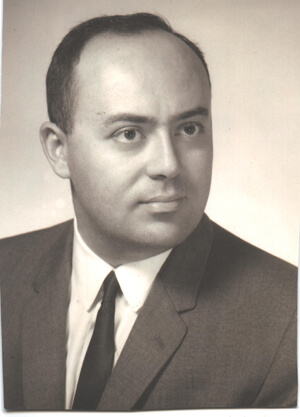 At the time, only a handful of computers in the world could perform the millions of operations required by his revolutionary algorithm. A computer capable of doing the calculations rapidly would have demanded the energy of a particle accelerator. However, time would eventually catch up with his vision.
At the time, only a handful of computers in the world could perform the millions of operations required by his revolutionary algorithm. A computer capable of doing the calculations rapidly would have demanded the energy of a particle accelerator. However, time would eventually catch up with his vision.
Dr. Viterbi’s first internationally regarded book, Principles of Coherent Communications, appeared in 1966. A second, Principles of Digital Communications and Coding, followed in 1973. During this time, he remained dedicated to his career in the UCLA School of Engineering and Applied Science, conducting fundamental research in digital communications theory and publishing his findings in leading journals.
Visionary ideas seemed to feed his entrepreneurial appetite. In the spring of 1967, Dr.Viterbi met Irwin Jacobs at a telecommunications conference in California. Both men, and another of Dr. Viterbi’s colleagues, Leonard Kleinrock, shared an interest in forming a consulting group. With an investment of $1,500 — $500 from each man — the trio founded Linkabit. The company grew as it supplied software for government computers and performed simulations using the Viterbi Algorithm. By the 1970s, Linkabit began providing technology for defense communications satellites using very large antennas.
An expanding strategy
But the sophisticated transmission systems that emerged from the Viterbi Algorithm had reached their technological limits. Large amounts of data sent from communications satellites required highly efficient integrated circuits, far more sophisticated than those available at the time. Dr. Viterbi and his Linkabit associates came up with a breakthrough computer to accomplish the task and dubbed it a “microprocessor,” even though it was made up of many chips.
His renown grew as fast as the company. In 1975, Italy’s National Research Council awarded Dr. Viterbi one of its highest academic accolades, the Christopher Columbus Award.
In 1980, Linkabit merged with M/A-COM of Boston, remaining a separate division. It soon produced the VSAT (Very Small Aperture Terminal), the foundation for private satellite communications networks. In 1985, the VSAT division was sold to Hughes. The team of Viterbi and Jacobs had a new dream: together, they founded Qualcomm Corp. to develop and manufacture satellite communications and digital wireless telephones. When its doors opened in 1985, Dr. Viterbi was respected across the globe for his innovative ideas, as well as his uncanny ability to turn scientific discoveries into profitable enterprises.
An experiment pays off
In the 1990s, Dr. Viterbi again capitalized on his knowledge of spread spectrum technology. He and colleagues devised a new transmission technology for cellular phones — CDMA, for Code Division Multiple Access — which would provide simultaneous access to a multitude of users, with less interference and greater security for voice and data. According to his own calculations, the network could have a capacity 10 to 20 times greater than a traditional analog system.
Dr.Viterbi traveled the country as CDMA’s champion. Soon, flagship telecommunications companies, including Pacific Telesis, Motorola and AT&T, invested in the experimental technology. By 2000, there were 50 million CDMAsupported cell phones in the world, making CDMA the dominant cell phone standard. “It was a team effort, and I’m proud of the part I played,” he said later.
During this period, his enchantment with scholarship continued and Dr. Viterbi, who resided in La Jolla, continued to teach part-time at the University of California, San Diego. In 1994, he became a UCSD professor emeritus.
USC honored his inventive spirit in 1986 with the USC School of Engineering’s Outstanding Alumnus Award and again in 1996 with the Graduate School’s Diamond Jubilee Alumni Award. In 2000, he joined the USC Board of Trustees. Technion, the Israel Institute of Technology, invited him to become a distinguished visiting professor of electrical engineering.
In March 2000, Dr.Viterbi, then 65, stepped down as vice chairman and chief technology officer of Qualcomm, saying, “It’s the right time to turn a page and widen one’s horizons.”
Over the years, he has received numerous awards for his contributions to communications theory and its industrial applications, including the Institute of Electrical and Electronics Engineers’ (IEEE) Alexander Graham Bell Medal, the Marconi International Fellowship Award and the IEEE’s Shannon Award and Lecture, considered the highest honor in communication technology. In 2001, he was named a “Grande Ufficiale della Repubblica” by the President of Italy.
Dr.Viterbi has received honorary doctorates from universities in the United States, Canada, Italy and Israel, and has been otherwise honored in Japan, Germany, Italy and the U.S. He is a Fellow of the IEEE, a Marconi Fellow and a member of the American Academy of Arts and Sciences, in addition to belonging to a select group of scientists who hold dual memberships in the National Academy of Engineering and the National Academy of Sciences.
From 1997 until 2001, Dr. Viterbi served on the U.S. President’s Information Technology Advisory Committee and, since 1983, has been active on the MIT Visiting Committee for Electrical Engineering and Computer Science.
A member of the USC School of Engineering Board of Councilors, Dr. Viterbi also is on the board of the Burnham Institute and the Scripps Cancer Center in La Jolla, a trustee of the Mathematical Sciences Research Institute in Berkeley and a member of the UC President’s Council for the National Laboratories.
He and his wife established The Andrew and Erna Viterbi Chair in Communications at USC in 1998. Appropriately, the chair’s first holder, Professor Solomon Golomb, is an expert in digital and space communications.
Hailed by his peers as a digital genius, Dr. Viterbi continues to shape our ability to connect, learn and explore. He currently serves as president of the Viterbi Group, LLC, which advises and invests in early stage companies, predominantly in wireless communications, network infrastructure and imaging. In addition, he has accepted an offer to teach again — at none other than the Viterbi School of Engineering. Who knows what he may discover next?
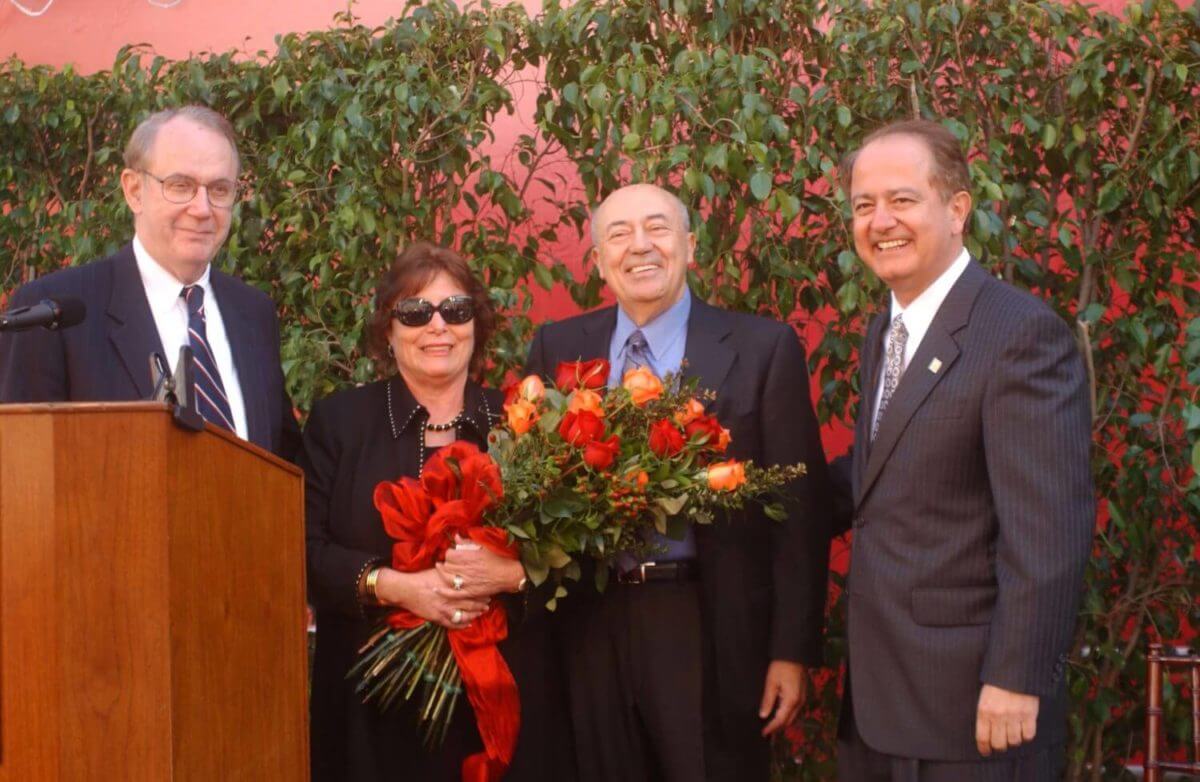
L-R: USC President Steven Sample, Erna and Andrew Viterbi, holding a bouquet of flowers, and Engineering School Dean C. L. Max Nikias.
The Viterbi Algorithm
Yielding Clear Communications
Imagine you’re a detective trying to determine the point of origin for a suspect arriving at the Seattle airport. He is from abroad and has been there for no more than an hour.
You know during this period that four domestic flights arrived from four cities served by flights from 30 others. One way to determine the suspect’s origin would be to go back to all 30 and make inquiries. The alternative: identify which of the four closest cities he arrived from, then investigate only places with connections to that one.
The algorithm Andrew J. Viterbi invented in 1966, and published the following year, is much more subtle and flexible than this simple illustration. But the basic situation and strategy are the same. For an algorithm is merely a precise rule (or set of rules) specifying how to solve some problem. A user starts with the result of a set of changes that happened in a series — not a random series, but one governed by known, rigidly formulated rules.
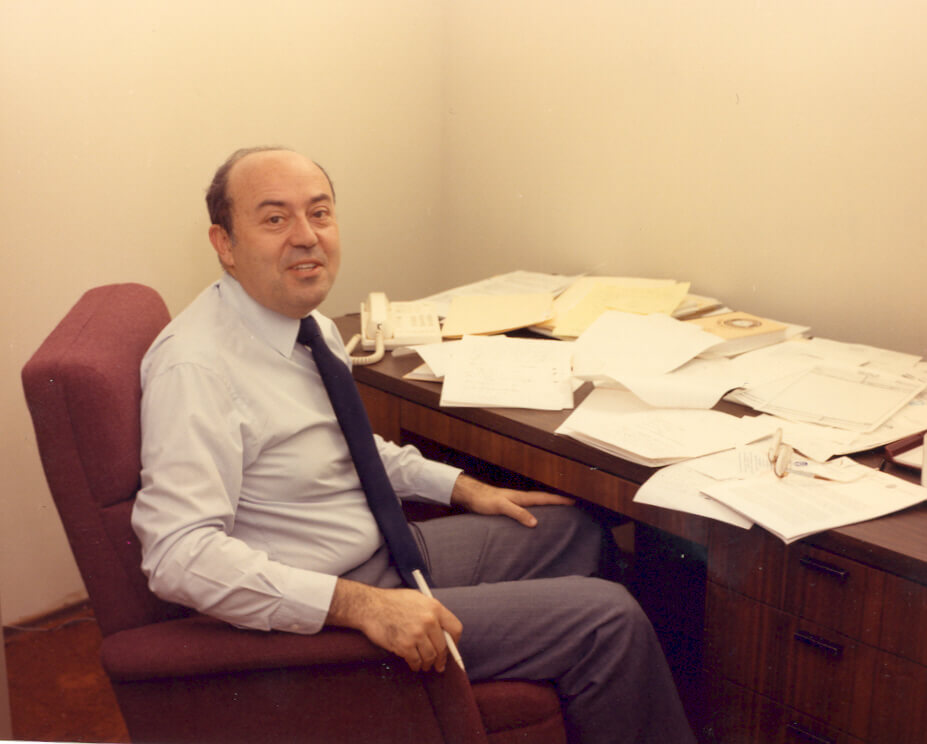
The algorithm takes the result and backtracks, throwing away all the branches that, by the rules, couldn’t have lead to the observed result.
When he created his system, Dr. Viterbi specifically focused on electronic signals encoding messages. To transmit messages so they won’t be degraded or lost by noise, additional “redundant” information is added at the transmitter, in a process called error correction coding. The result coming into a receiver is a pulsing, miscellaneous stream of bits, ones and zeros. The signals aren’t clear zeros and ones, but values on a sliding scale that the receiver has to designate as zeros and ones, as best it can.
Thanks to the Viterbi Algorithm, this sliding confusion of radio waves can yield a clear, undamaged message. The key rests in a time series of incoming information, with each set of bits tagged by its order of arrival.
The element sample — up to 15 time sequences deep in the latest, most sophisticated versions — is probed for a message by working back in time. Instead of analyzing all possible messages in this stack, the algorithm swiftly finds the most probable one, throwing away more and more possibilities with each layer.
At the time Dr. Viterbi published his algorithm, computers weren’t up to the task of even a relatively shallow decoding. With the growth in computing power, the Viterbi Algorithm swiftly came of age as a powerful, useful tool for ensuring static-free voice communications over satellite links, with cell phones its current showcase “killer application.”
Family Fuels Journey of Discovery
At 10 years old, Andrew J. Viterbi, the only son of an immigrant Italian Jewish family, would gaze across the Charles River from his modest home in Boston and imagine himself attending world-famous MIT.
It was a big dream for a boy whose family had fled fascist Italy only six years before, but not too big for someone who already knew he wanted to be an engineer, in the tradition of one of his heroes, Guglielmo Marconi, considered the “Father of Radio.”
Born in 1935, Andrew Viterbi first resided in Bergamo, Italy, northeast of Milan, with his parents, Achille, an ophthalmologist, and Maria Luria, a homemaker.
But in 1938, the regime of Benito Mussolini passed new racial laws whose main target was Italy’s small, integrated Jewish population. Suddenly, people who had called themselves Italians were informed that Italy had renounced them. Achille Viterbi closed his practice and prepared for their escape.
Their proposed sailing date was September 1 — also the secret date Hitler had chosen for his invasion of Poland. However, acting on a tip, the Viterbis left two weeks early, landing safely in New York, where a cousin lived. Within two years, the family moved again, this time to Boston. 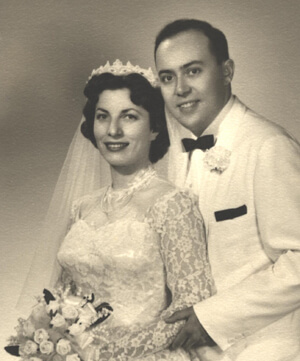
There, Andrew Viterbi attended Boston Latin High School, the nation’s oldest school and alma mater of Benjamin Franklin and Joseph Kennedy. Dr. Viterbi graduated fourth in his class of 225 in 1952.
At MIT, he immediately went on the fast track, earning both his bachelors and masters degrees in communication theory in just five years.
In 1956, another event occurred that changed his life. He met Erna Finci and fell in love. Among other things, they shared a dramatic entry into a new land.
During World War II, Erna, her brother and parents had fled Sarajevo, Yugoslavia, as the German army moved in. When the family reached the Italians in Montenegro, partisans blew up a troop carrier. In reprisal, the Italian army arrested a large number of civilians. Among them were Erna’s father Joseph, her grandfather and two uncles. Seeing them in handcuffs, she burst into tears. “Let them go,” said an Italian officer. “I don’t want to see this little girl cry.”
The Finci family escaped to Parma in Italy, then Switzerland, where they waited out the war, finally settling in California in 1950.
In 1957, Andrew Viterbi and his new family moved permanently to Los Angeles. When Dr.Viterbi wrote papers on communication theory, Erna was there. She remembers him lost in thought on the couch, scribbling on a notepad while their children — Audrey, Alan and Alexander — played.
In April 2000, Andrew and Erna Viterbi returned to Bergamo, Italy, where Dr.Viterbi had been corresponding with Paolo Sarpi High School history teacher Giorgio Mangini. Over five days, the Viterbis, Mangini and 43 students traveled by bus to Austria and the Czech Republic, visiting remains of concentration camps and crematory ovens. The emotional journey brought Dr.Viterbi full circle.
However he may look back, Andrew Viterbi is always looking forward as well. His own children have gone into the “family business.” Audrey is a Ph.D. engineer involved in communications and co-founder, with her father, of Viterbi Group, LLC; Alan is an entrepreneur; and Alexander, an expert in digital cinema. It’s a continuing legacy that would make Marconi proud.
Dean's Message
March 1, 2004
Ninety-nine years after the first engineering classes began on this campus, we are proudly naming our school USC’s Andrew and Erna Viterbi School of Engineering.
No name could more appropriately capture the ingenuity and innovation that permeates this school. For Andy Viterbi is one of our own: a USC Ph.D., a USC Trustee, a member of the Board of Councilors, a pioneer in the global spread of wireless communications and a visionary engineer and entrepreneur who gave birth to the cellular technology that connects hundreds of millions of people.
Try to imagine a world without Andy’s inventions, and you’d have to travel back in time 30 years — before cell phones, direct broadcast satellite TV, deep space weather forecasting and video transmissions from the surface of Mars. 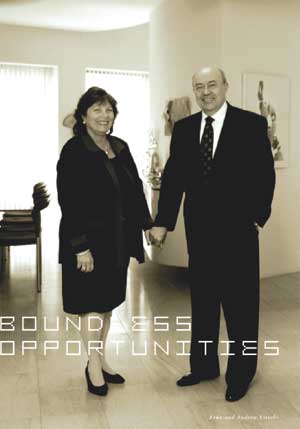
With their generous gift of $52 million, the largest ever received to name an engineering school, Andy and his gracious wife, Erna, have assured the future of the school with far more than the growth of our endowment. The innovative Viterbi spirit will inspire a new generation of engineers and catapult The Andrew and Erna Viterbi School of Engineering into the uppermost echelon of engineering schools.
We are well on our way. We are consistently ranked in the top ten of graduate engineering programs by U.S. News & World Report, and in the top five among private schools.
With more than $135 million in annual research expenditures, our school consistently ranks in the top three nationally in funding per tenured faculty member. Currently, 23 faculty are members of the National Academy of Engineering, the fourth-highest total among the nation’s private universities.
The Viterbi School is one of only four, and the only one in California, with two prestigious National Science Foundation-funded Engineering Research Centers. We have just become the site of the Department of Homeland Security’s first Center of Excellence. In the fierce competitions for all of these centers, our school placed number one.
This wealth of leading-edge research enables our Ph.D. students to spread new technologies around the world. Eight hundred students are pursuing degrees through our Distance Education Network, which delivers classes utilizing an innovative high-speed Internet interface designed here. Our undergraduate curriculum is experiencing a dramatic transformation. And our incoming freshmen have logged the highest average SAT scores at USC for the past two years.
These talented young women and men will shape tomorrow’s world. Perhaps 100 years from now, when humans are broadcasting the weather from Mars, we may be able to trace the origins of those information technologies to The Andrew and Erna Viterbi School of Engineering.
On behalf of the students, staff and faculty, I express our deepest gratitude to Andy and Erna for this gift and the boundless opportunities it opens for all of us.
C. L.Max Nikias
Dean
USC Engineering — Cradle of the Digital Age
Andrew J. Viterbi’s inventions — led by his influential algorithm — are just one aspect of what has long been a major strength of USC’s Andrew and Erna Viterbi School of Engineering: digital information technology.
Since the early 1960s, researchers at or connected to USC have played a central role in the transmigration from the old radio world of analog signals to the digital domain we inhabit today.
USC engineers have made vital contributions to the theoretical understandings and science of computers and to the basic tools computers depend on to operate and communicate. Such everyday items as the compact disc, fax machine and cell phone use technology rooted in USC research. Interplanetary communication signals from Voyager to the Mars Rovers are kept pristine with error correction systems created at USC.
Critical elements of the Internet began at USC, including the powerful system for robustly coding and decoding digital signals. Also born here: the now-familiar technologies and Internet fundamentals of jpeg and mpeg, used by computers worldwide to store, transmit and restore still and video images.
The digital ancestry of today’s Andrew and Erna Viterbi School of Engineering was fixed in the early 1960s by that era’s legendary dean, Zohrab Kaprielian. Under his leadership, three great mathematical and information theorists joined the USC electrical engineering faculty. Solomon Golomb, Irving Reed and Lloyd Welch were all young scientists at the beginning of their careers when Claude Shannon of MIT published his landmark 1948 paper on signals. All three, and Dr.Viterbi, would eventually win the Shannon Award, the highest honor from the Information Theory Society of the Institute for Electrical and Electronic Engineers.
At a time when information was transmitted using continuous analog waveforms, Shannon conceived that all signals — whether for use on a telephone, radio or television — could be decomposed into zeros and ones, encoded, transmitted and decoded at the other end. Shannon determined a maximum rate of transmission on a single channel and posited that adding enough redundancy to the transmitted signal would enable receivers to decode the message accurately no matter how noisy the channel.
Shannon’s insights were theoretical. But, to a remarkable degree, Golomb, Reed, Welch and their students and colleagues — including Andrew Viterbi — turned theory into working signaling systems. That work continues today with a new generation of USC electrical engineers such as Alan Willner and Keith Chugg. Here are some of the landmark contributions by USC-associated researchers to the digital revolution:
The baum-welch algorithm The Baum-Welch Algorithm developed by Lloyd Welch in collaboration with Leonard Baum is, like the Viterbi Algorithm, a powerful tool for examining and analyzing the results of continuing processes that proceed regularly in stepwise fashion — so-called Markov processes. It has become an important tool in many fields, led by speech recognition, and gained recent additional celebrity as a key component of the turbo-decoding systems that functions, as the name indicates, with unparalleled speed.
Domain name system (DNS) The Internet depends on a flexible, stable system to regularize, distribute and store names. In 1983, at USC’s Information Sciences Institute, Paul Mockapetris devised a system to solve this problem, with the potential to add an almost unlimited number of new addresses. In addition to organizing numerical addresses, Mockapetris and the late Jon Postel introduced the now-ubiquitous .com, .gov, .edu, .org, suffixes, as well as country codes.
Image compression & recognition William Pratt was among the first to study methods of analyzing and storing data that recorded visual images in compressed form. Harry Andrews explored methods of recognizing shapes — initially, printed letters — in digital files. The work of Pratt, Andrews and subsequently Andrew G. Tescher led to today’s jpeg compression system for still images. The parallel mpeg system, which compresses video images, also has USC roots. Jay Kuo and Antonio Ortega are continuing USC research into video compression, while Irving Reed created his own system of image compression, adopted by AOL.
Pseudorandom sequences/shift register sequences In 1967, Solomon Golomb published the first book devoted exclusively to pseudorandom sequences, also known as shift register sequences. As the technology of digital communications has evolved, these sequences have played a central role in many applications, including digital CDMA cell-phone systems and “direct-sequence spread spectrum” secure military communications. They are widely used in limited-access security systems, “streamcipher” cryptography, and jam-resistant missile guidance systems (for generating efficient, continuous wave radar signals), as well as in implementing the encoding and decoding of many error correcting codes, including Reed- Solomon codes.
Quaternary (z4) error correction codes/3g cellular In 1994, Vijay Kumar, working with his Ph.D. student, Roger Hammons, Jr., discovered a hidden regularity in existing error codes, which led directly to improvements and added efficiency in CDMA cell coding. Rather than encoding binary messages, Kumar’s codes employ quaternary (1,2,3,0) values, which are at the basis of sophisticated new “third generation” (3G) signal equipment, that carry information four times as efficiently.
The Viterbi Museum
A small hidden jewel at the University of Southern California Andrew and Erna Viterbi School of Engineering. 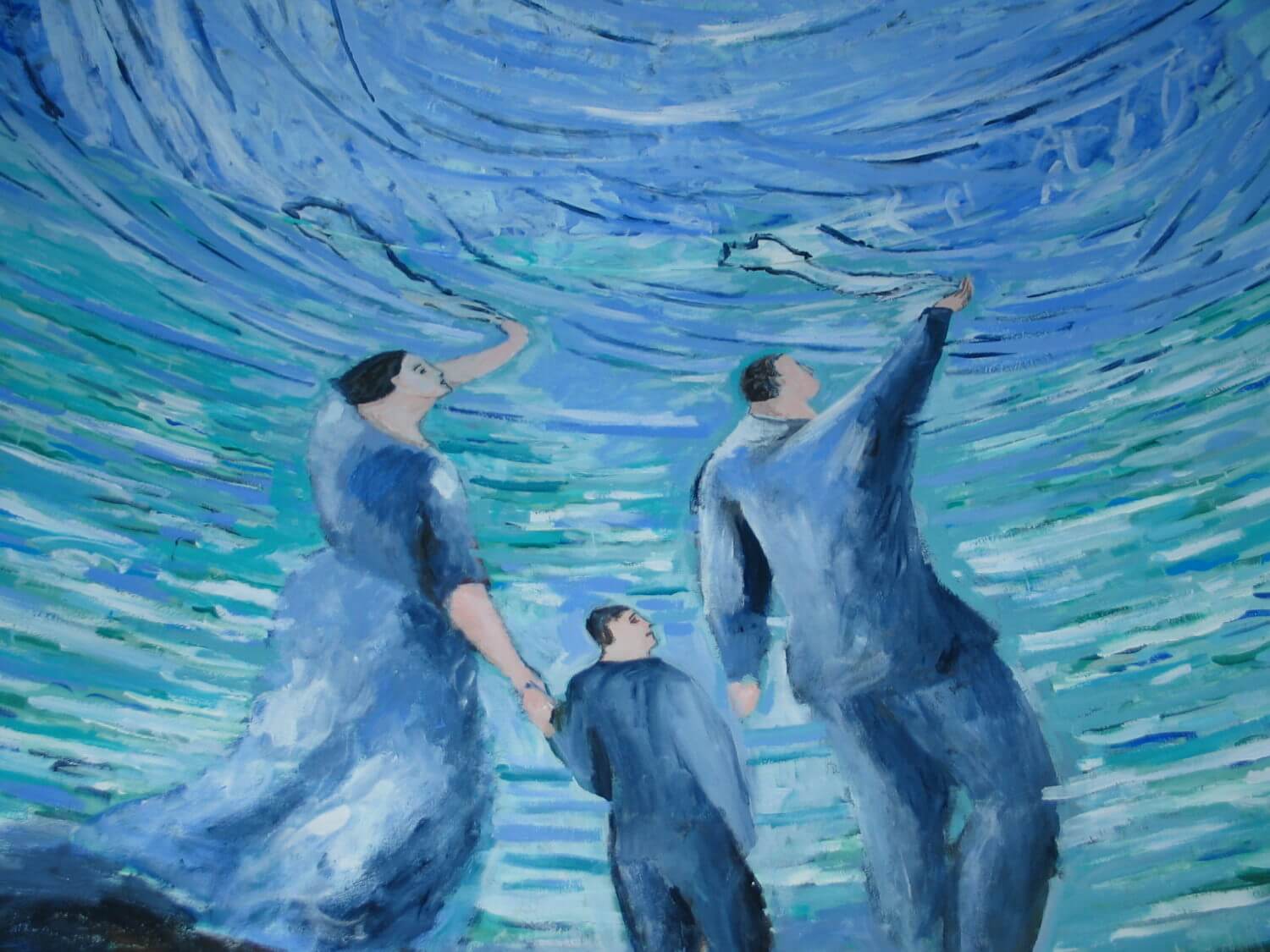 Learn More
Learn More
Published on December 6th, 2016
Last updated on April 8th, 2021







